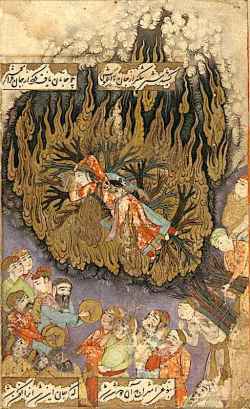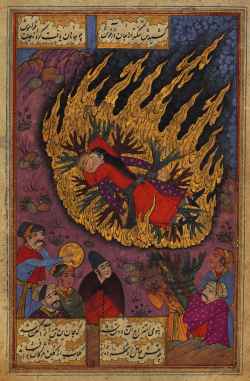Sacrificed Wife, Sacrificer's Wife: Women, Ritual, and Hospitality in Ancient India
Related Documents:
Satī. The bride immolates herself on the funeral pyre (1657)
from: Isfahan, Iran
The Israel Museum, Jerusalem
Scene of a Sati, with a woman throwing herself into the flames amid a crowd playing trumpets. Above, a winged devil holds the banner with the book's title and the torch with which he lights the ritual fire. (1670)
from: Abraham Rogerius, Le Théâtre de l’idolatrie ou la porte ouverte, Amsterdam, Jean Schipper, 1670, title page
Contentious Traditions: The Debate on Sati in Colonial India
Delhi: Kali for Women, 1989.
The Impartial Spectator of Sati, 1757-84
in: Eighteenth-Century Studies, v. 42 (2008), issue 1: pp.19-44.
Satī, from a Sūz u Gudāz manuscript. The union of the couple on the pyre (1657)
from: Sūz u Gudāz ms, Iran, Walters Manuscript W. 649, fol. 19b (Burning and Melting)
The Walters Art Museum, Baltimore, Maryland



